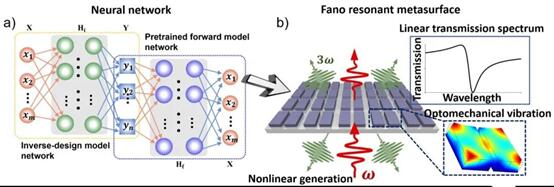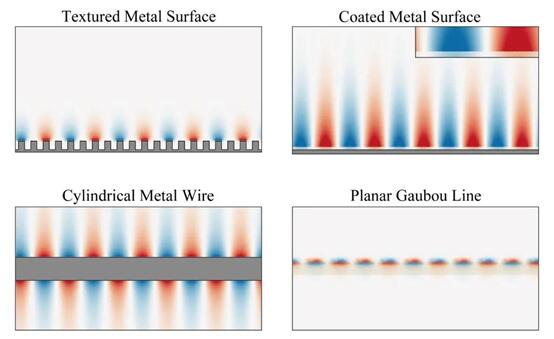- rebecca25
- Oct. 21, 2021
The 2020 Advanced Photonics Editor-in-Chief Choice Award has been released recently. In the end, an original research article and a review article were acknowledged to this honor. “Every article published in 2020 deserved this award,” Co-Editor-in-Chief Anatoly Zayats said. “Finally, we decided to recommend these two articles based on the level of attention and recognition they gained from the readers. There is no doubt that they reflect the development trends in the field of optics and photonics.”
The winning research article named “Enhanced light–matter interactions in dielectric nanostructures via machine-learning approach”, is presented by the researchers from University of New South Wales, Australian National University and Queensland University of Technology. The article demonstrates that machine-learning techniques can be used to enhance metasurfaces by optimizing them for nonlinear optics and optomechanics (Fig. 1). The discovery has promising possibilities for the development of a wide range of photonic devices and applications including those involved in optical sensing, optoacoustic vibrations, and narrowband filtering.
"The use of machine learning has become ubiquitous, not only in image processing, but also in designing photonic structures with the required properties. Machine learning offers completely counterintuitive designs within the parameter space, which would be difficult to predict otherwise. Optimization of the enhanced light-matter interactions with the dielectric nanostructures achieved using machine learning in the work led by Professor Miroshnichenko is a vivid example of this."
——Anatoly Zayats (EIC)

Fig. 1. (a) The architecture of the TN model, which consists of an inverse-design network connected to a pretrained forward model network; (b) Nonlinear generation and optomechanical vibration
Video Introduction to the Article
The winning review article named “Terahertz surface plasmonic waves: a review”, is presented by the researchers from Tianjin University and Oklahoma State University. The article reviews terahertz surface plasmonic waves on various types of supports (Fig. 2) and outline research directions for terahertz surface plasmonic waves.
"Terahertz wavelengths promise many cutting-edge applications, and eventually, the terahertz chip will be the likely platform on which plasmonic waves will serve as the information carrier. The review article by Zhang and colleagues comprehensively summarizes recent advances on terahertz surface plasmonic waves in excellent detail. It could serve as a tutorial for researchers who are interested in this field and a reference for engineers who are developing next-generation optical prototypes and products."
——Xiaocong Yuan (EIC)

Fig. 2. Simulation results of various THz SPWs using a commercial eigenmode solver
Video Introduction to the Article


